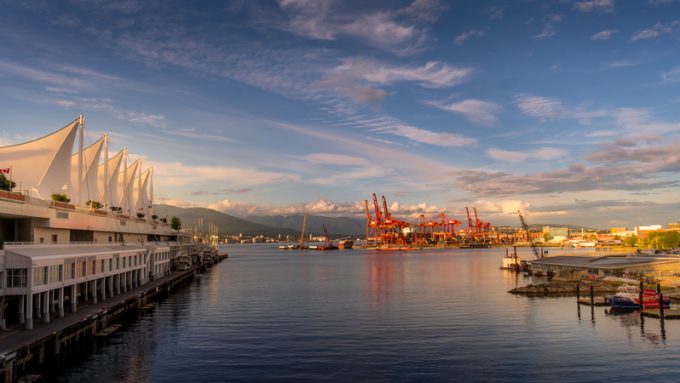Mærsk et al: so much silver lining you can barely see the clouds
Between April showers and spring sunshine

A surge of imports meeting strained rail capacity has pushed up container dwell times at North American west coast ports, especially in Vancouver.
And importers face further disruption with Canadian rail workers set to vote on industrial action in their contract negotiations with the railways.
Yesterday, Vancouver Fraser Port Authority’s dashboard for rail flows showed container dwell times of more than seven days at the Centerm container facility, while Vanterm and Deltaport registered dwells of five-to-seven days.
Average dwell times climbed from 4.3 days in December to 5.2 in January, 6.7 in February and 7.3 in March.
The congestion was caused by a double-digit surge in imports. For March, the port posted a 10% rise in boxes over February, 51.7% higher than 12 months earlier. Terminal utilisation reached 91% at Deltaport and 96% at Centerm.
Hapag-Lloyd warned customers that that all marine terminals at the port were heavily congested due to an inadequate supply of rail cars. Both Canadian Class I rail carriers have rushed additional cars to the port and increased train length, but the port authority has signalled that it will take some time for the backlogs to clear.
Meanwhile, the Teamsters Canada Rail Conference has notified its members that it has set a vote for a strike, to be held from 8 April to 1 May, which means industrial action could come as soon as 22 May.
The union, which represents engineers and conductors employed at Canadian National and CPKC, has been in negotiations with the carriers over a new labour contract to replace the one that ran until the end of last year. Talks started last autumn but soon got bogged down in differences over pay and rest periods.
The union has rejected proposals made by the carriers, claiming these would amount to pay cuts for about half of its members and eliminate “every quality of life provision attained through years of fighting”.
The involvement of federal conciliators since 1 March has failed to advance the negotiations. According to RailState, which monitors rail traffic, a strike would affect the movement of $1n worth of goods a day.
Like Vancouver, ports in California have also registered strong growth in throughput driven by a surge in imports. At Los Angeles, container throughput was up 35% for the first two months, Long Beach reported a 20.7% increase and Oakland’s box volume was up 18.1%.
Similarly, a lack of rail cars has exacerbated the pressure from the spike in imports, which has prompted BNSF and Union Pacific to bring in more equipment to whittle down the backlogs.
However, the US west coast surge has not caused any serious congestion, said Weston LaBar, SVP industry relations at Cargomatic. In response to the experience of the congestion in 2021 and 2022, stakeholders have made a lot of investment in infrastructure and equipment, so the ports have been better positioned to handle volume surges. In addition, better visibility of incoming traffic has given stakeholders time to prepare for increased volume, he explained.
“The biggest one to watch is rail,” he added. “In February, rail dwell time rose pretty dramatically, from 4.7 to 6.26 days. That means it can affect truck operations.”
Overall, though, the experience has demonstrated that the west coast gateways are geared up to handle larger volumes without suffering bottlenecks that could prompt cargo owners to shift their traffic elsewhere. As freight has flowed back from eastern gateways, serious congestion would have threatened this momentum, he reflected.
Comment on this article